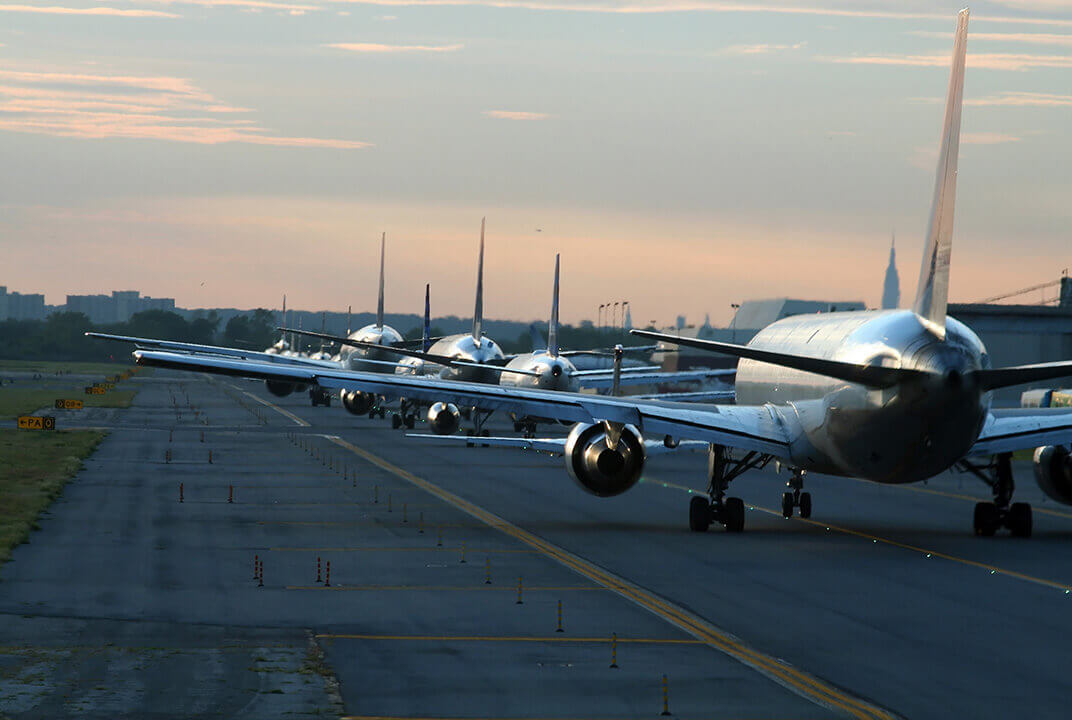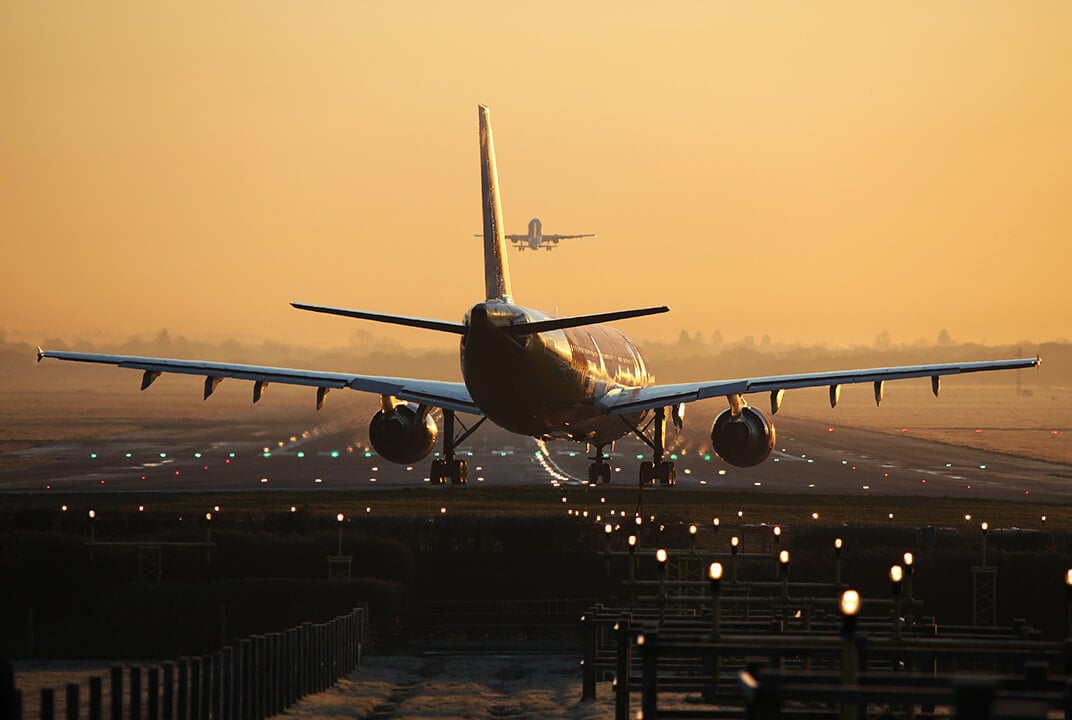Insight | Ensuring UAV safety will usher in an exciting new dawn for aviation
Ensuring UAV safety will usher in an exciting new dawn for aviation
null
Unifying manned and unmanned aircraft and enabling them to share the same airspace safely is central to the collaboration between Altitude Angel and Inmarsat.
Talk to anyone within the unmanned aircraft systems (UAS) industry and they will tell you the same thing. Thanks to the staggering potential of unmanned aerial vehicles (UAVs), the world stands on the cusp of transformational change.
From delivering vital medical supplies to rural locations in a fraction of the time it would take to drive, to assisting first responders in disaster zones, the ground-breaking capabilities of UAVs are unlimited. These are indeed game-changing times for aviation.
“In the 1950s and 60s people were excited about aviation,” explains Stephen Farmer, Head of Corporate Communications and PR at Altitude Angel, the world’s leading unified traffic management (UTM) technology provider. “They were excited about flying. But somewhere along the line the sky lost its appeal. Getting on a plane became just like getting on a bus or a train. We are putting something exciting back in the sky. Moreover, this technology will genuinely save lives.”
There is, however, one challenge to overcome before this potential – this vision – can be realised: enabling both manned and unmanned aircraft to operate in the same airspace safely.
This is where Inmarsat – in collaboration with Altitude Angel – comes in. Our extensive background in safety, communications, navigation and surveillance means that the ability to safely manage UAVs in commercial, global airspace fundamentally plays to our strengths.
Delivering fair and equal access to the sky
And this experience lends itself perfectly to Altitude Angel’s work within UTM.
“We have one sky,” Phil Binks, Altitude Angel’s Head of Air Traffic Management, explains. “And we have a lot of actors who wish to use it. At the moment it’s primarily used by people who fly around in metal objects, and they talk to other people on the ground, and they’re kept separated from each other. All of a sudden, we’re now introducing new actors into this environment who won't necessarily have the ability to talk to people on the ground.”
So, how to separate the two? Segregation is one option says Binks. This would allow unmanned aircraft to use their own isolated portion of sky. But, as Binks acknowledges, this isn’t the most efficient use of airspace, it probably won’t meet future requirements and, critically, isn’t scalable.
“We’re trying to move away from a segregated position, which we effectively have today, and move towards an integrated capability,” he explains. “So we all have fair and equal access to the sky, because at the end of the day, it’s a single resource we all must share.”
This sense of coming together is vital, says Farmer. So much so that rather than refer to UTM as unmanned traffic management, he’d rather it be known as unified traffic management.
“UAVs will not be operating in isolation,” he notes. “They’ll work alongside general aviation, police helicopters, air ambulances and the like.”
A single point of truth
There are numerous benefits to establishing a unified traffic management system for UAVs, alongside manned aircraft. Implementing a process that is simple and transparent will encourage UAV operators to submit flight plans and get approval for flights. Those rogue operators that don’t follow these procedures will then be easier to spot and deal with, thus enhancing safety at every turn.
This, in essence, is the premise behind Altitude Angel’s airspace management platform, GuardianUTM. On the face of it, a simple and intuitive operating system, it provides clear benefits to airports, airlines and UAV operators.
Says Binks: “Thanks to the vast amounts of data we’re collecting, we’re building up this picture and capability to make sure all this happens safely. This ecosystem can be disseminated as an interface and integrated with other activities. And slowly we start to get a true picture of what is going on in the sky. From that we can enable a single point of truth for everybody to work from, which is critical.”
Turning the potential of Pop-Up UTMs into a reality
But what happens when you don’t have a ground network? At the beginning of 2020, Altitude Angel realised that its system and technology could use satellite communications to feed into the UTM. This then began to solve the problem of Beyond Visual Line of Sight (BVLOS) and how UAVs can fly safely, even within commercial airspace.
Almost immediately, a potential case study highlighted how UAVs, operating safely BVLOS, could bring benefits. Binks was at a conference in the U.S. chatting with Inmarsat’s Senior Director Commercial UAV & UTM, Anthony Spouncer. At the same time, wildfires were raging in California.
He recalls hearing about planes that were meant to drop water on the fires being grounded because UAVs were in similar airspace. It transpired that a fire department had sent the UAVs up to identify the fires.
“This is exactly what UTM is designed to prevent,” says Binks. “It’s about that single source point of truth. What you wanted was the fire department to understand where its UAVs were – and also to understand where other aircraft were – and to give manned aviation confidence and understanding of what’s also in the sky. And likewise you don’t want the UAV to be hit with 10,000 gallons of water and put out of action.”
This was a lightbulb moment and a conversation with Inmarsat ensued looking at establishing Pop-Up UTMs anywhere on the planet, without the need for a ground-based infrastructure. Key to this would be our global satellite connectivity – the only way to give UAVs that crucial BVLOS capability and ensure UAVs could connect at even the remotest locations. The challenge then became clear: how could the partners rapidly turn this into a reality?
Together with Altitude Angel we demonstrated the Pop-Up UTM concept in Turkey late last year, using an A-TechSYN airframe. The flights were monitored by a pilot 60km from the take-off and landing area and were connected and tracked using our global L-band satellite network.
“That's where it came about,” enthuses Binks. “It was basically the wildfires and trying to get manned and unmanned aviation, which complement each other in a wildfire situation or a tsunami, in the same airspace. Or if you're working in the middle of sub-Saharan Africa where there might be a need for manned and unmanned aviation to be working together, you're going to need something that's going to help them deconflict.”
A new era for aviation is here
The future for Altitude Angel and its UTM system is bright. On the back of the test flights and demonstrations in Turkey it received a number of enquiries from new territories, ranging from Africa to Australia. The appetite is there.
Binks believes that once mainstream adoption occurs, there will be a domino effect – that UAVs will be used across a number of industries for countless reasons.
“We will enable thousands of other businesses to take flight by providing safe and secure airspace for all,” he reflects. “We’ll be saving lives by delivering medical supplies to rural locations. We’ll be enabling a lower carbon footprint because those same samples won’t have to go in the back of a diesel-powered transit van or on the back of a motorbike. And we'll be doing it faster because we won't be curtailed by gridlocked traffic. We’re enabling a whole new generation of air traffic.”
It’s this can-do attitude that excites Altitude Angel. From our involvement to other forward-thinking partners such as A-TechSYN and Cobham, like-minded companies are quickly coming together and collaborating effectively to propel this nascent industry forward. The possibilities are unlimited.
“It’s the next new thing in aviation,” Binks concludes. “And this will change aviation. Once the BVLOS nut is cracked it will open up the skies to a myriad of things. It will only be limited by our imagination.”


